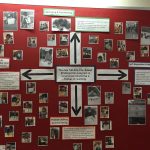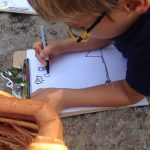Our Making Learning Visible project aims to explore the use of pedagogical documentation as it contributes to student learning and informs our teaching. More specifically, we aim to explore how documenting children’s experiences in full-day kindergarten can shape and build on their individual and group learning, foster self awareness, and awaken understanding. In recognizing the value of pedagogical documentation for both students and teachers, we hope that, through experimenting with making student learning visible, we can create a community of learners that are self aware and can help to co-construct meaningful and personalized learning experiences. With the release of the new full-day kindergarten document and the Kindergarten Addendum to the Growing Success document, the emphasis is that the child is “actively engaged” in the learning and assessment process. Thus, the goal and components of our Making Learning Visible project will support the Seven Fundamental Principles of the Growing Success document, and in doing so can have a “profound, positive impact not only on children’s learning but also on their motivation to learn and their confidence in their ability to do so” (Growing Success – The Kindergarten Addendum, p.4).
Team Members
Christine Kim
Toronto District School Board
Talia Charezenko
Toronto District School Board
Katherine Chen
Toronto District School Board
Mina Choi
Toronto District School Board
Professional Learning Goals
- Explored different documentation practices
- Gained a deeper understanding of how pedagogical documentation contributes to student learning and how it can be used to increase children’s interests, participation and motivation in learning
- Engaged collaboratively with members of the team and fellow educators
- Created connections between the current research and the revised full-day kindergarten curriculum document
Activities and Resources
The most effective resource used throughout our project was the use of a digital portfolio and assessment app. This was made possible through the purchase of iPads. While there are many different apps that may be used, we chose to use FreshGrade – a tool to document children’s learning, and aims to make learning visible. Through FreshGrade, we were able to engage the children in their own learning, and share their development with teachers and families. Documentation via FreshGrade included photos, written descriptions, videos and audio.
The opportunity to collaborate with team members was invaluable in planning for the documentation process, in giving and receiving feedback on our teaching and assessment of children’s learning, and especially in discussing and self-reflecting on the results in order to strengthen the quality and effectiveness of documentation.
The text, Visible Learners – Promoting Reggio-Inspired Approaches in All Schools was helpful in becoming more familiar with the values and approaches to documentation. It provided many examples of making learning visible including learning portraits, quotes, pictures and samples of student work.
Unexpected Challenges
Making learning visible in a kindergarten classroom was challenging due to class sizes – it was difficult finding the time required to document student learning, as well as having the time to interpret certain documentation and to use it effectively to plan for further learning opportunities.
Sharing student learning through portraits, learning stories and bulletins required additional resources including a colour printer, photos and classroom space. While we did our best to use the resource funds specifically for this purpose, we still funded a lot of it on our own.
Enhancing Student Learning and Development
The practice of making learning visible in the classroom helped both educators and students to support their own and each other’s learning. When the children could see their learning displayed, they were excited and eager to share their thoughts. With support, they were able to engage in self-reflection and communicate their learning and thinking. As educators, we were able to identify their interests and plan for further learning or inquiries – which helped to motivate and further children’s learning. FreshGrade was effective as a timeline of their growth, where the children were able to follow their own development over time.
Sharing
Pedagogical documentation is an important part of the kindergarten curriculum that directly impacts student learning. As a result, it should be ongoing, and as educators we should continually be engaging in self-reflection and professional development to further our ability to capture each child’s unique learning. This involves sharing what we learn with our fellow educators through team meetings, resources via Google Drive, and samples of student work on bulletin boards.
Project Evaluation
As a team, we were very excited to be a part of this project. As relatively new kindergarten teachers, we were able to learn more about the importance and value of pedagogical documentation. Throughout the project, through self-reflection and collaboration with each other, we were able to identify what types of documentation were effective, how to choose what to share and how to use documentation to engage and motivate the children. We were successful in making learning visible in our classrooms. We shared student learning through learning stories, photos, and digital portfolios – which were used to engage and motivate students and inform our teaching.
Resources Used
Ontario Ministry of Education. (2016). The Kindergarten Program, 2016. Ontario Ministry of Education.
http://www.edu.gov.on.ca/eng/curriculum/elementary/kinderprogram.html
Krechevsky, Mara; Mardell, Ben; Rivard, Melissa; Wilson, Daniel. (2013) Making Learning Visible: Promoting Reggio-Inspired Approaches in All Schools.
FreshGrade app
Resources Created
These resources will open in your browser in a new tab, or be downloaded to your computer.




